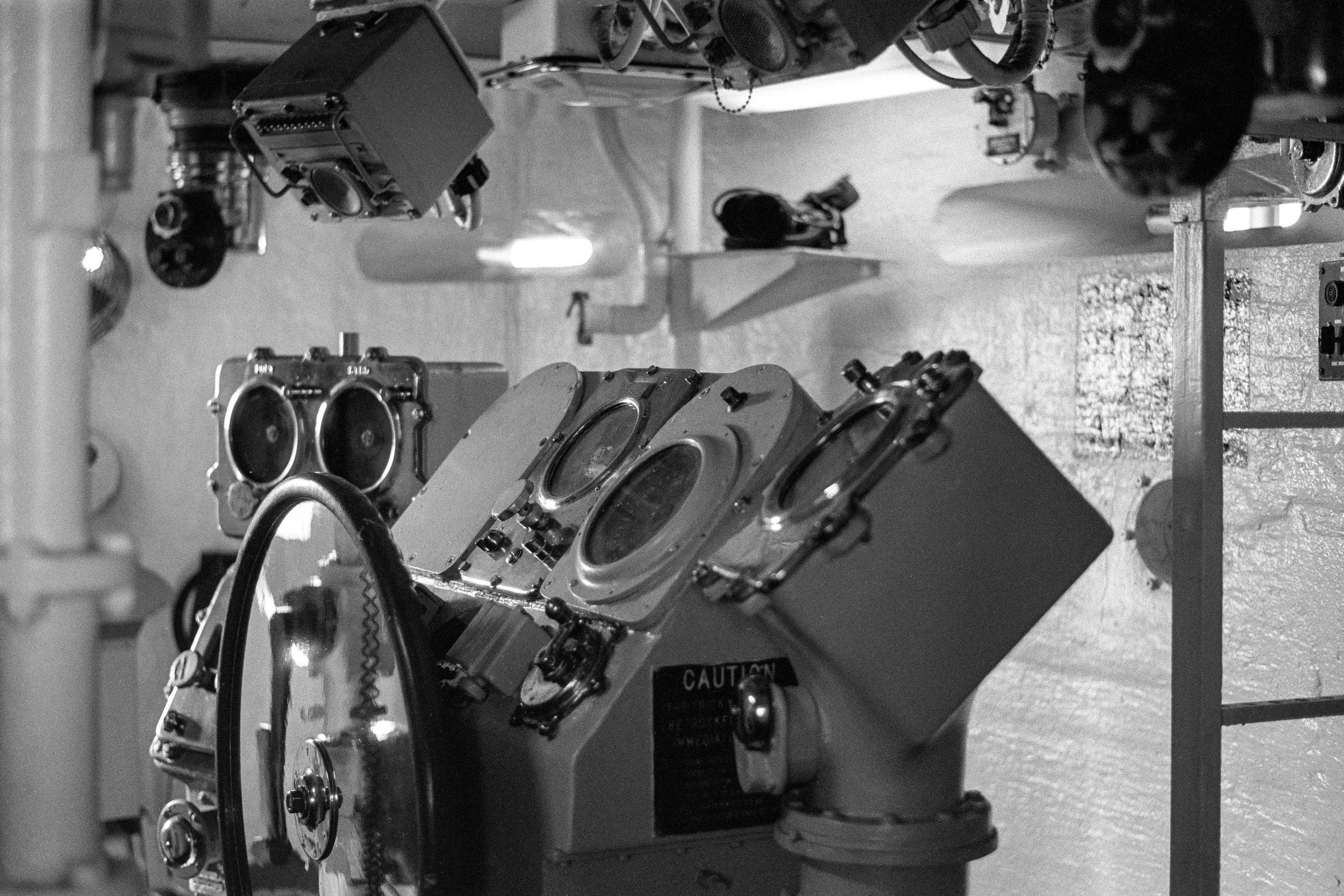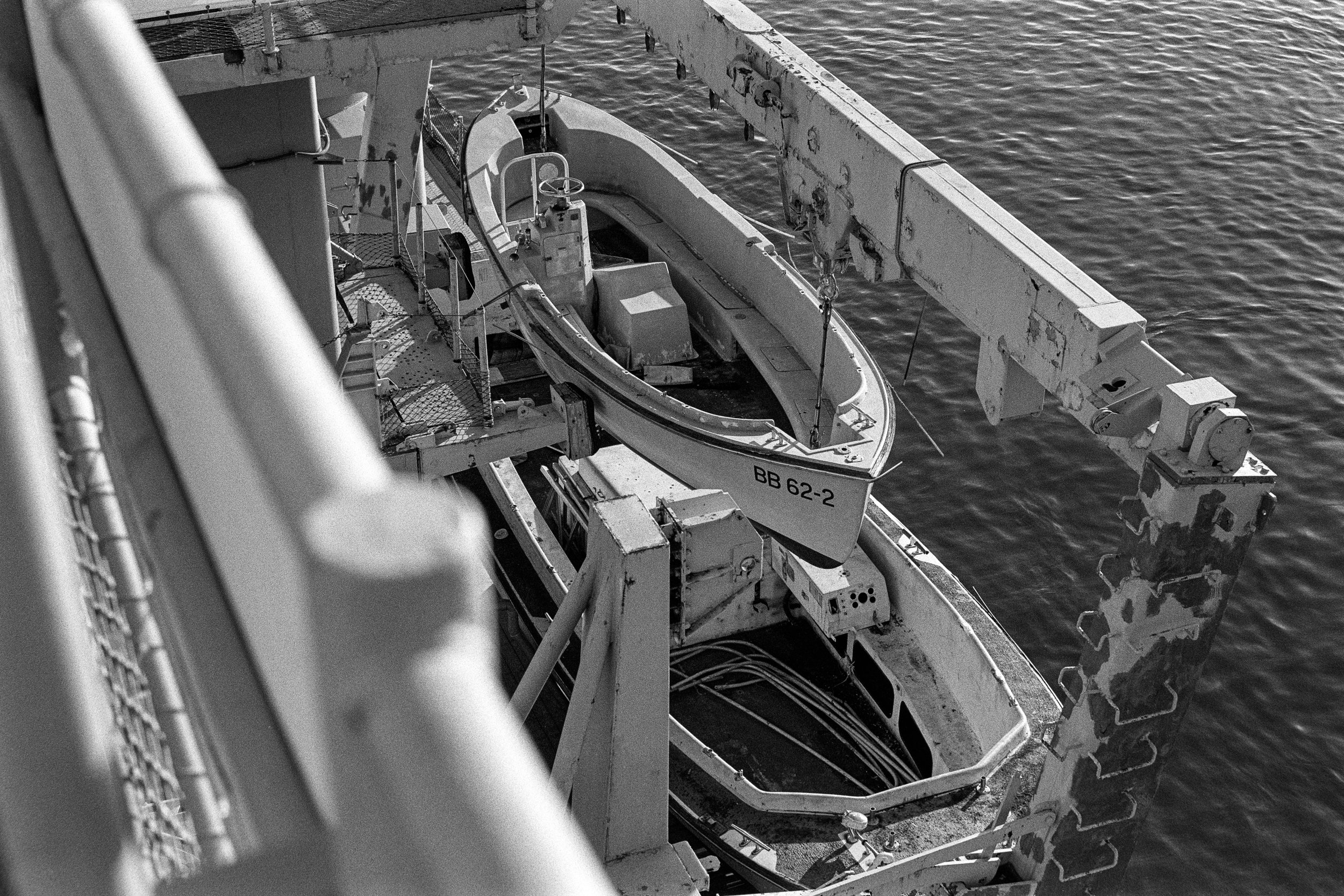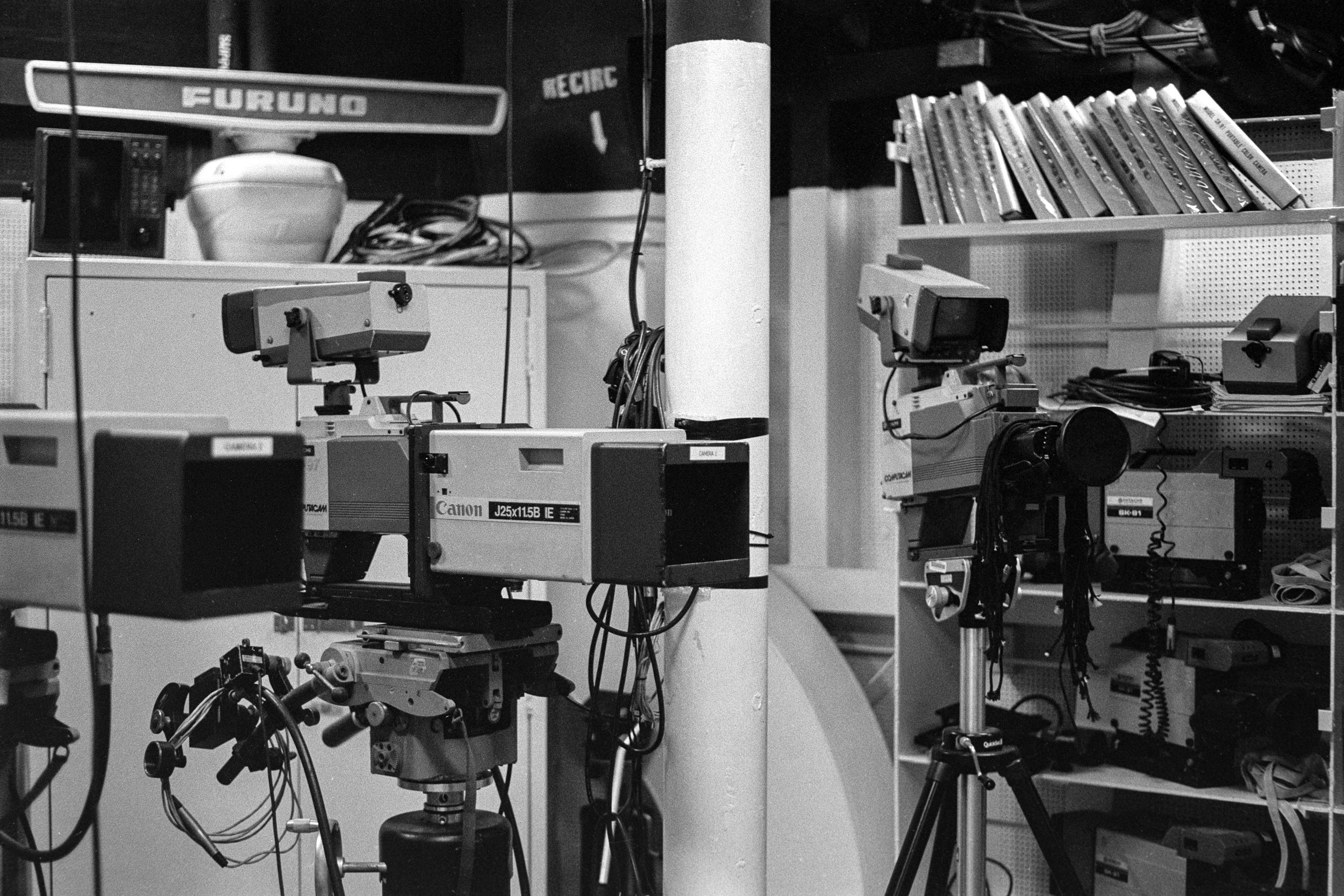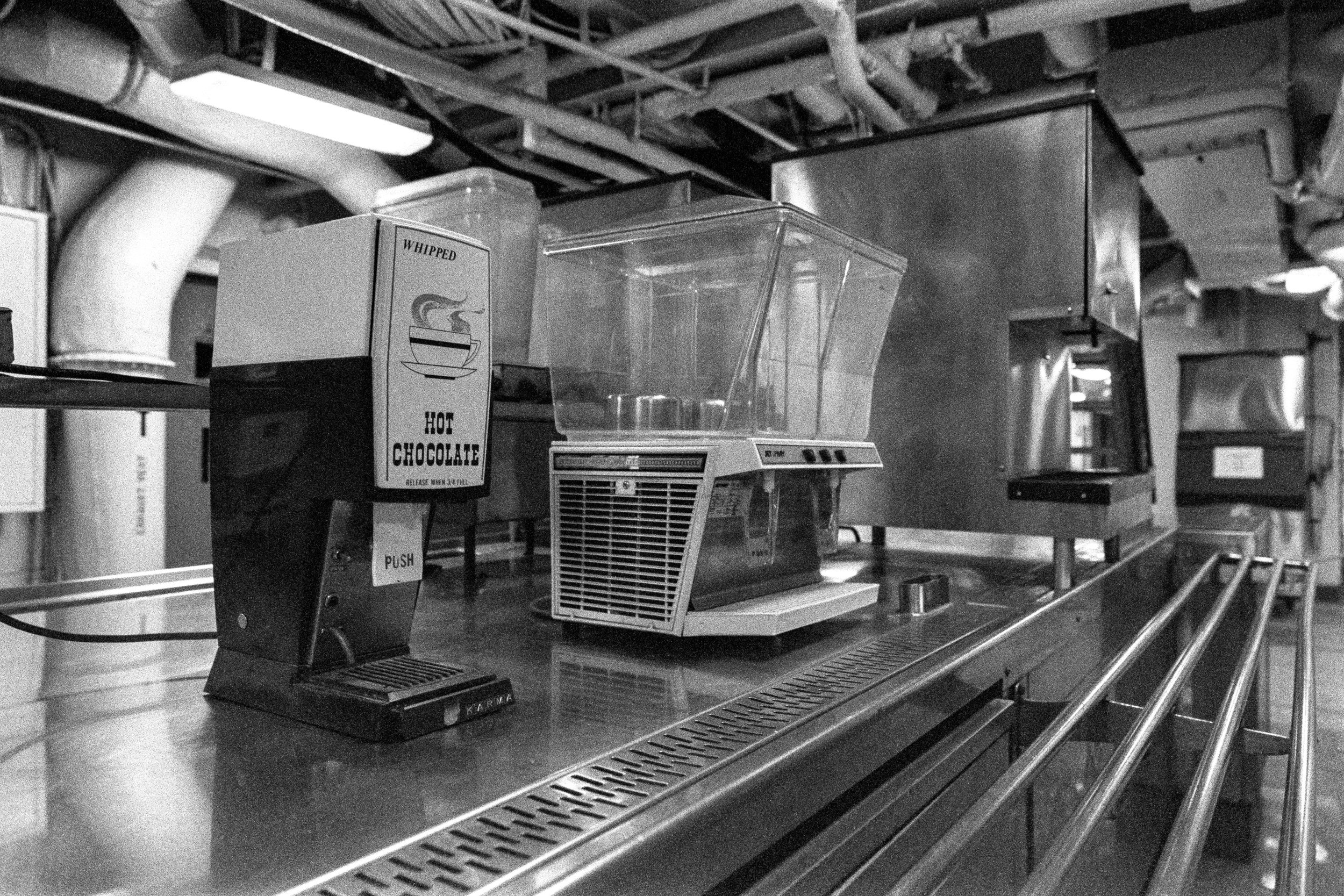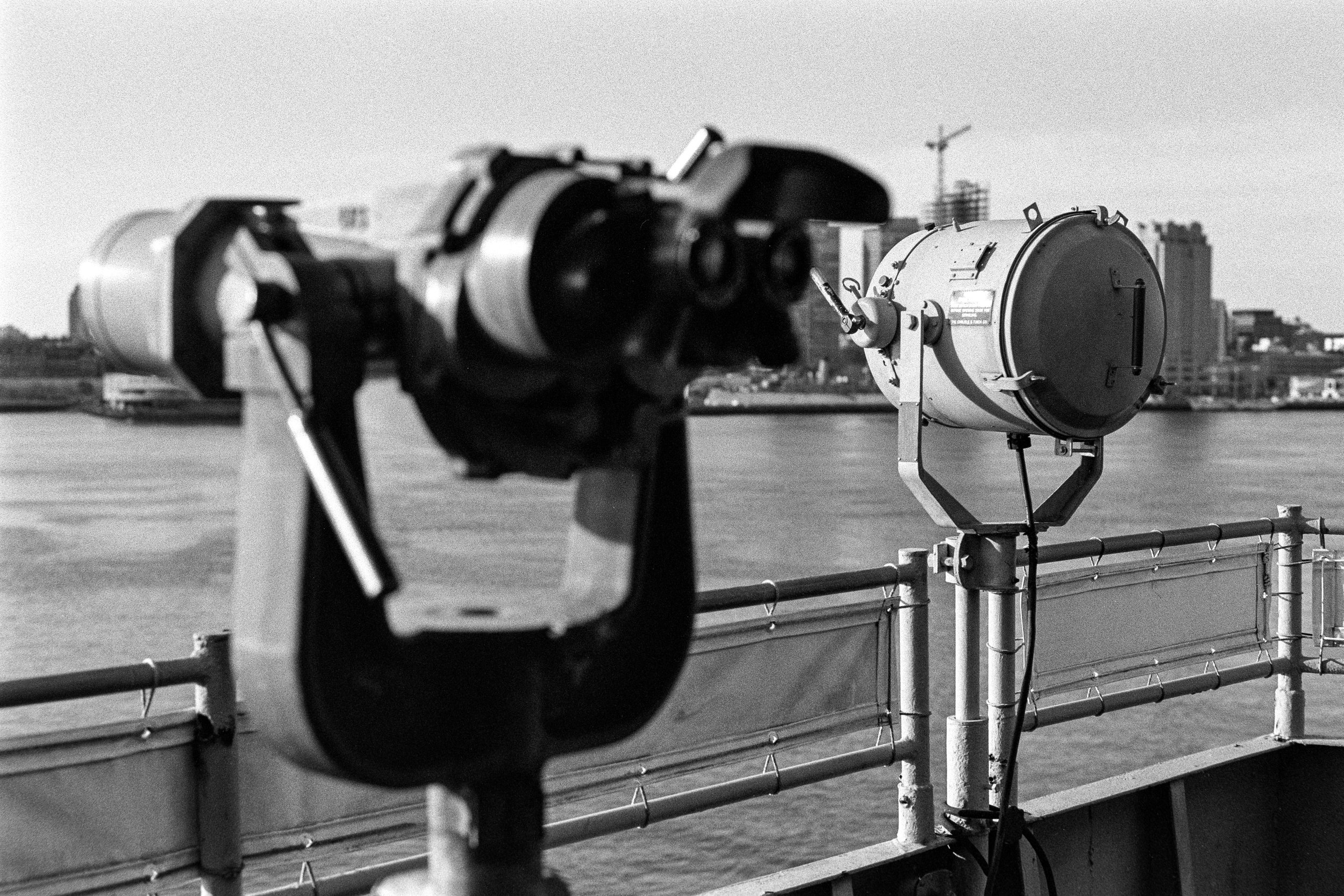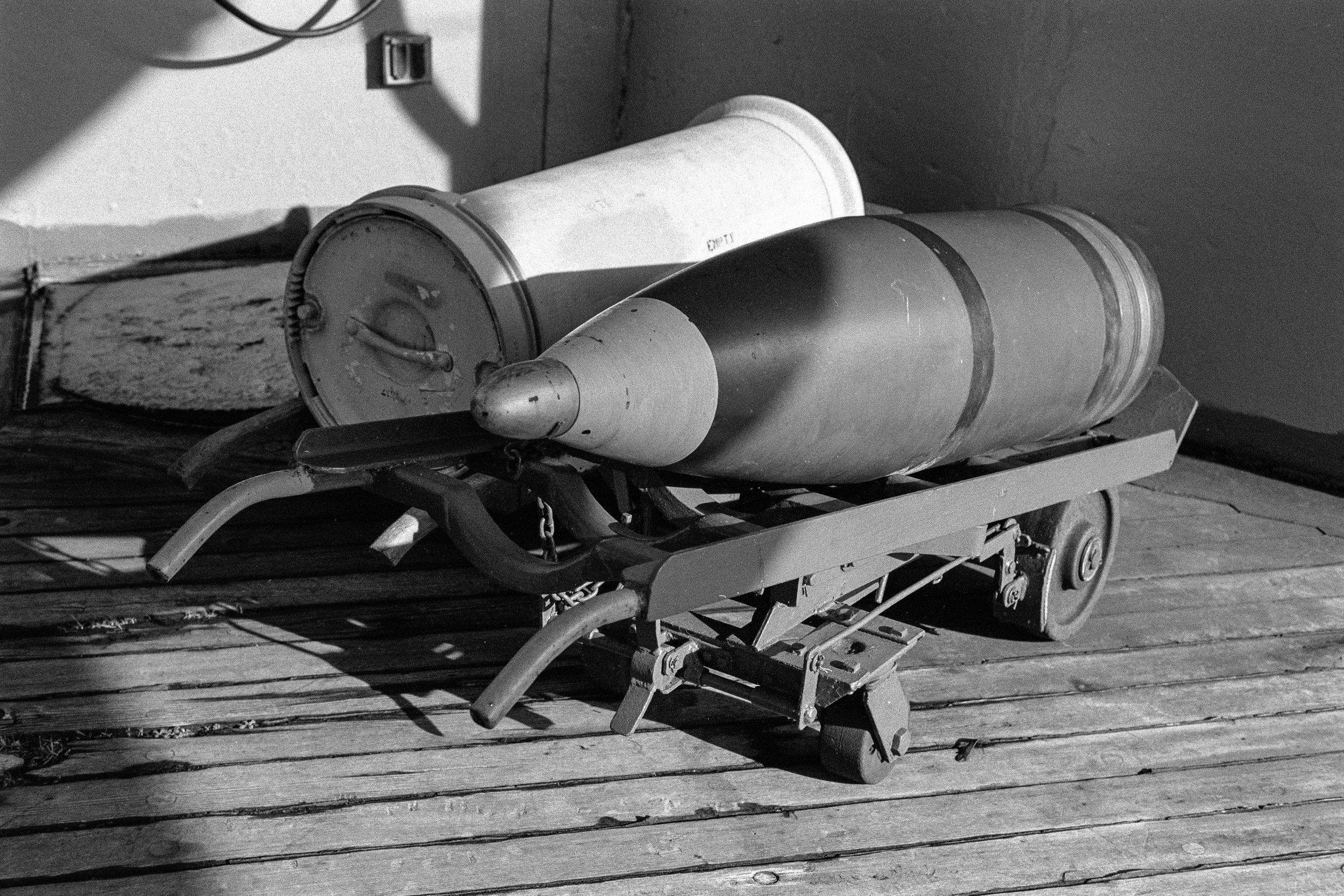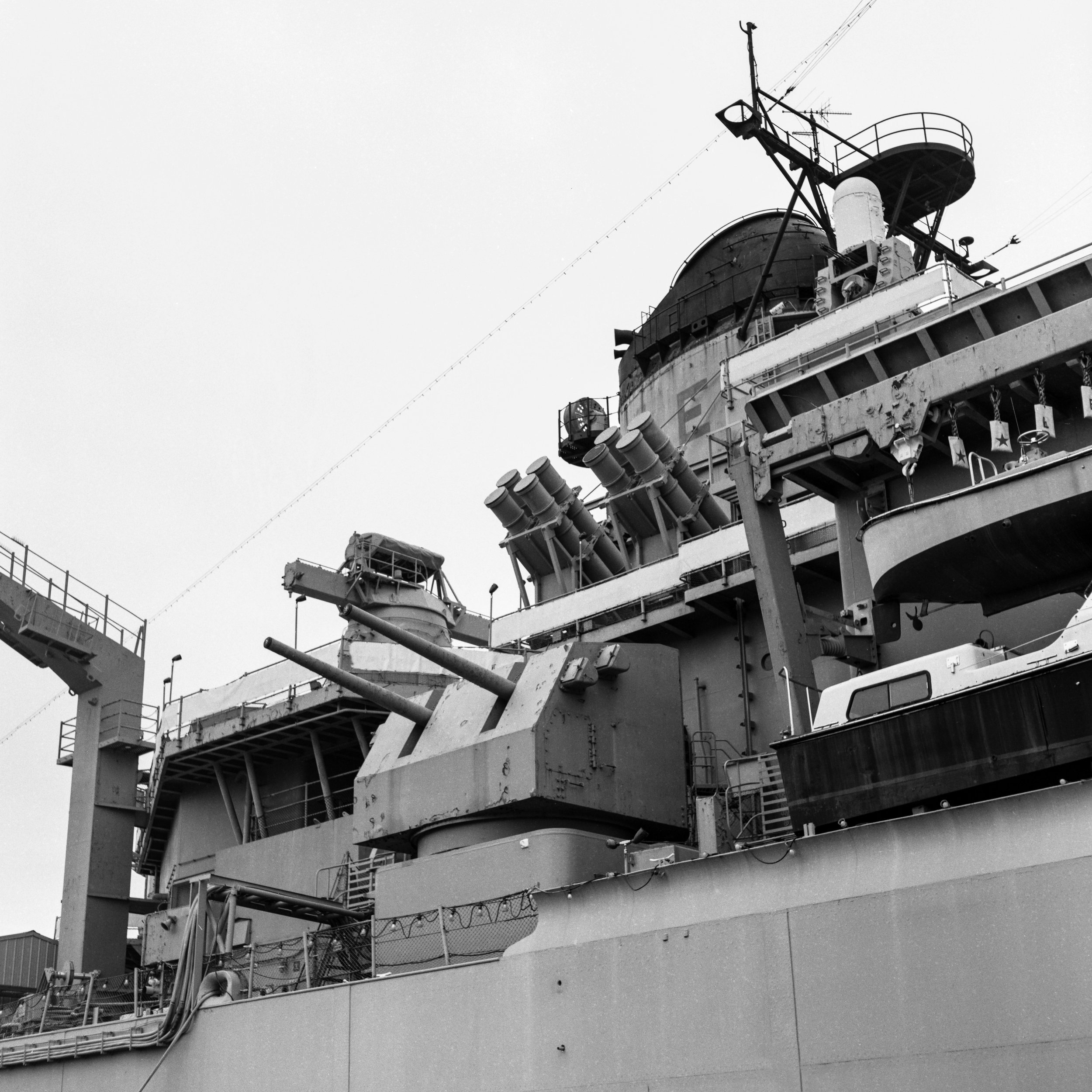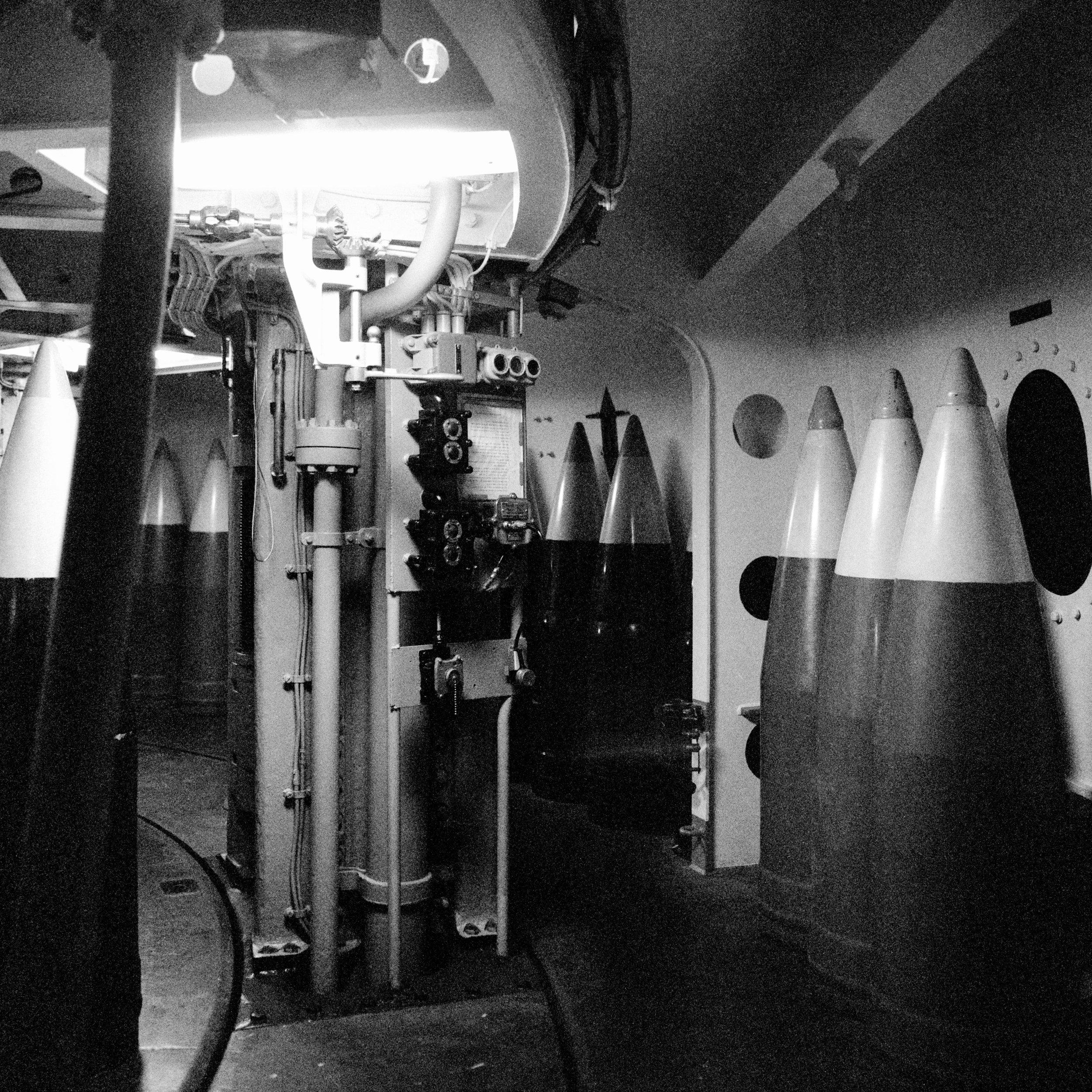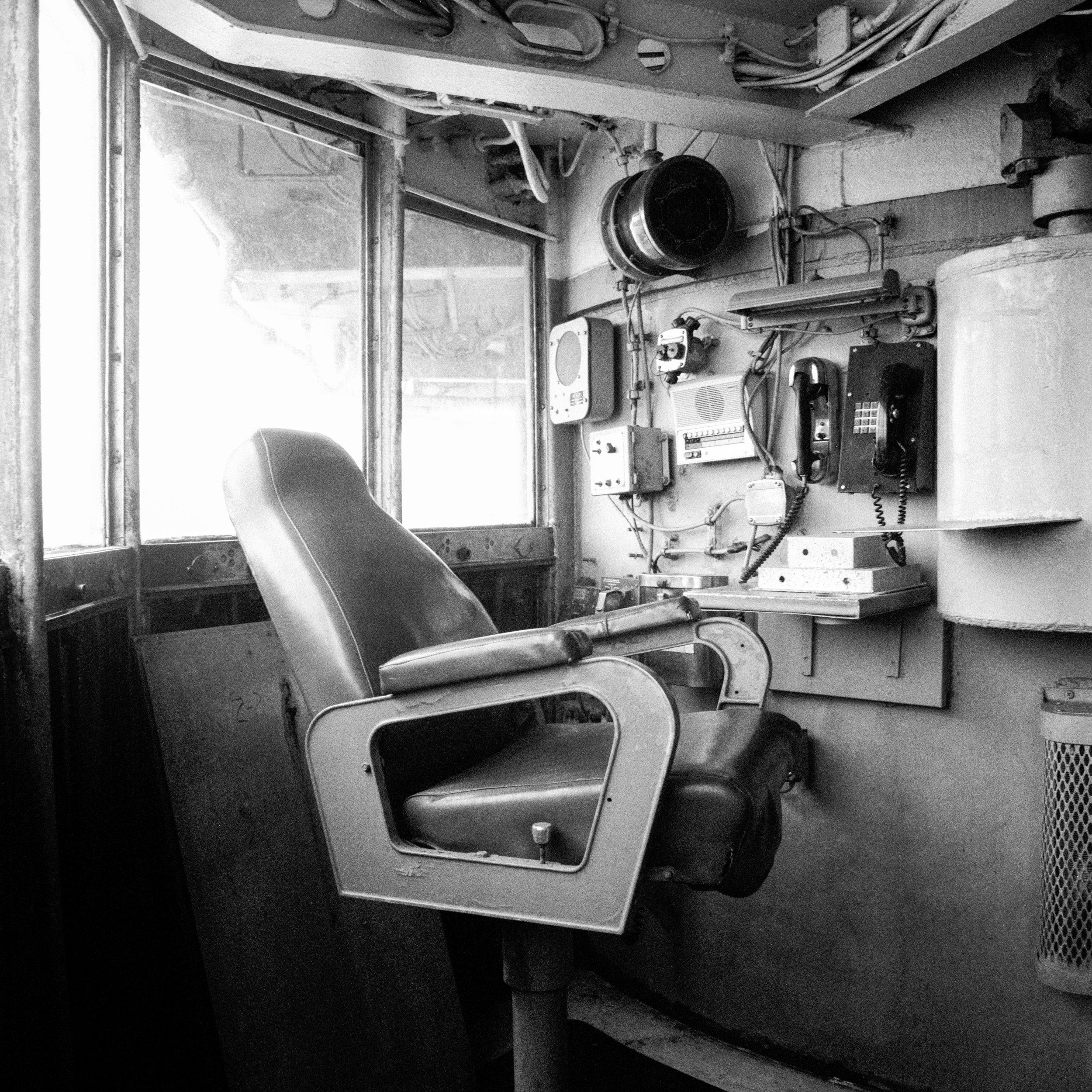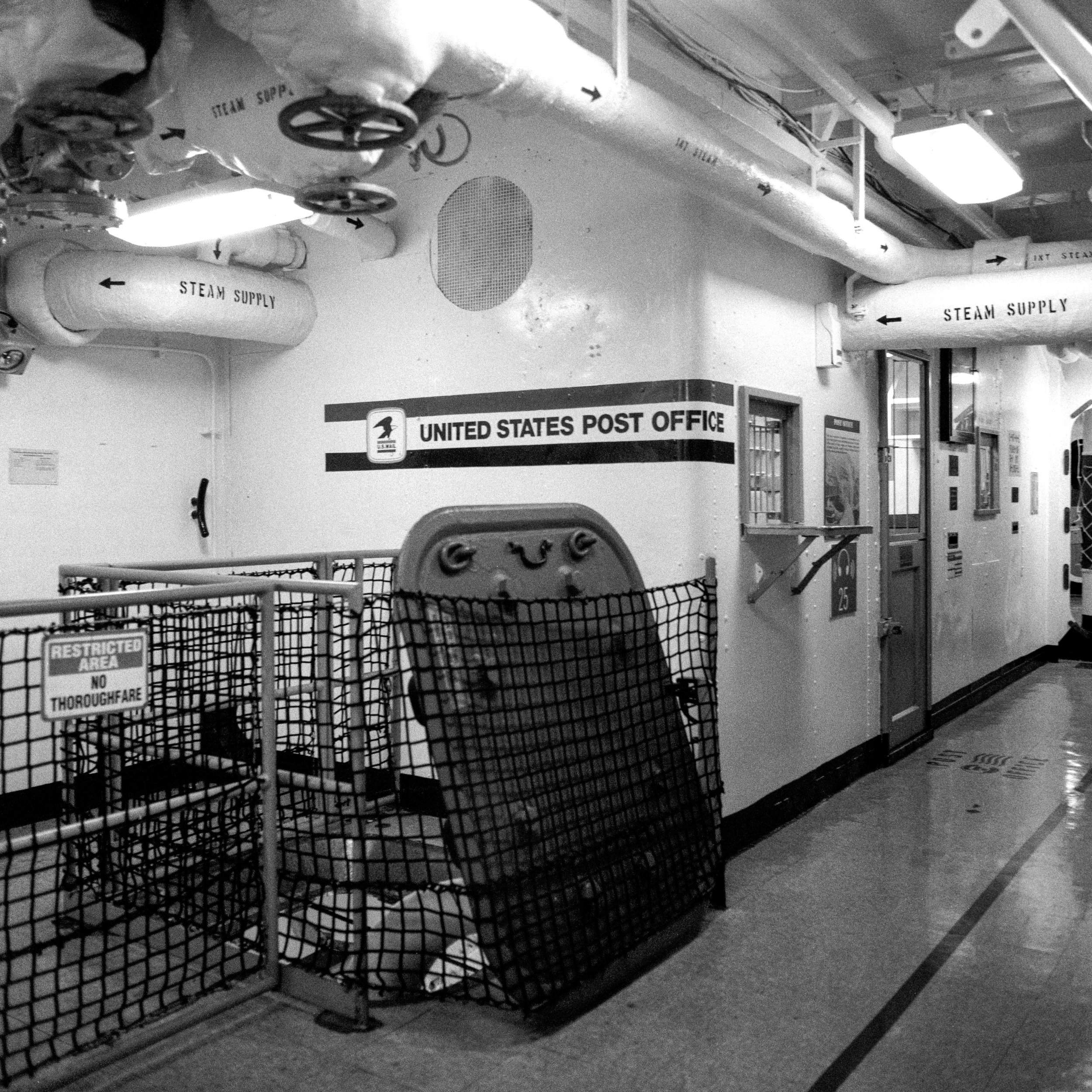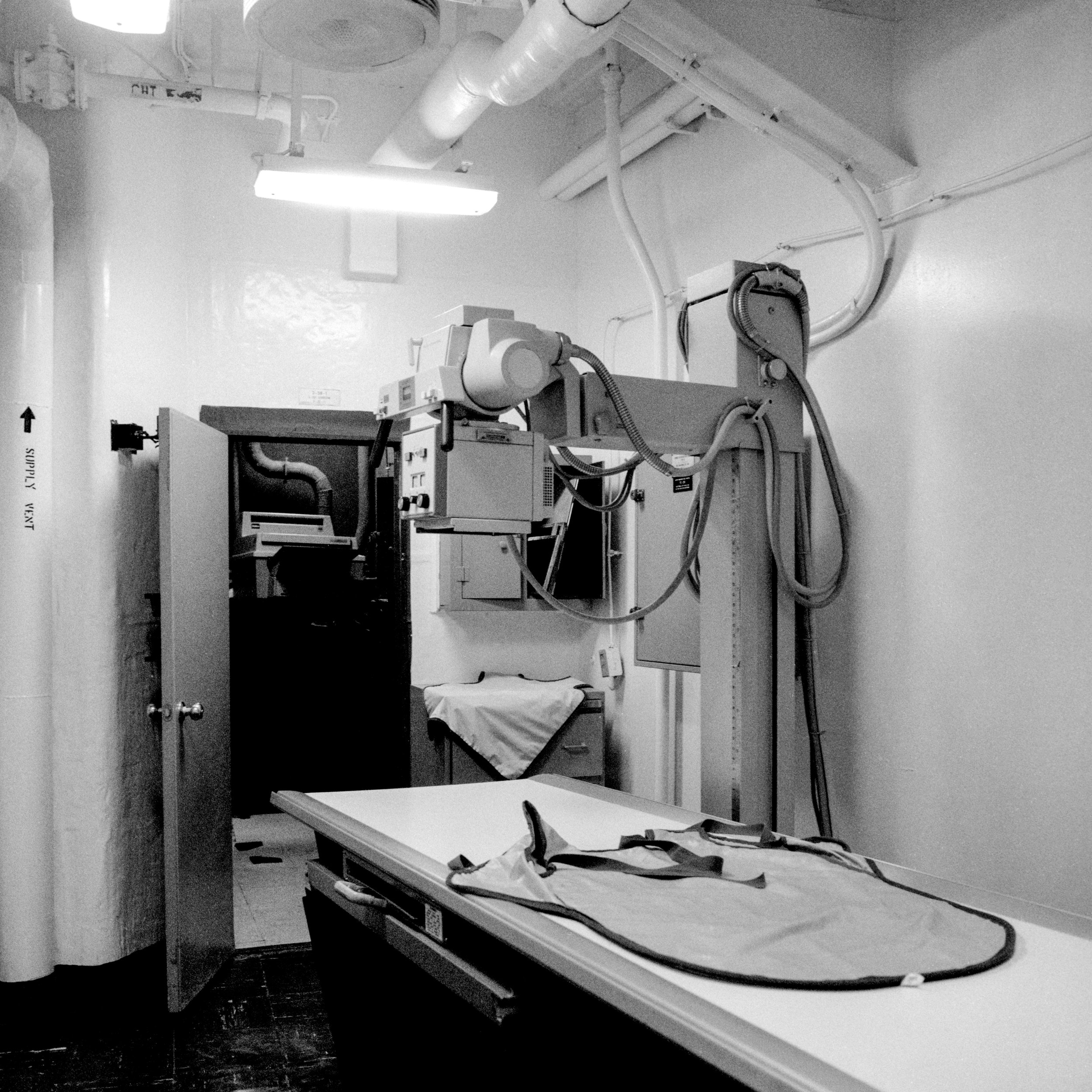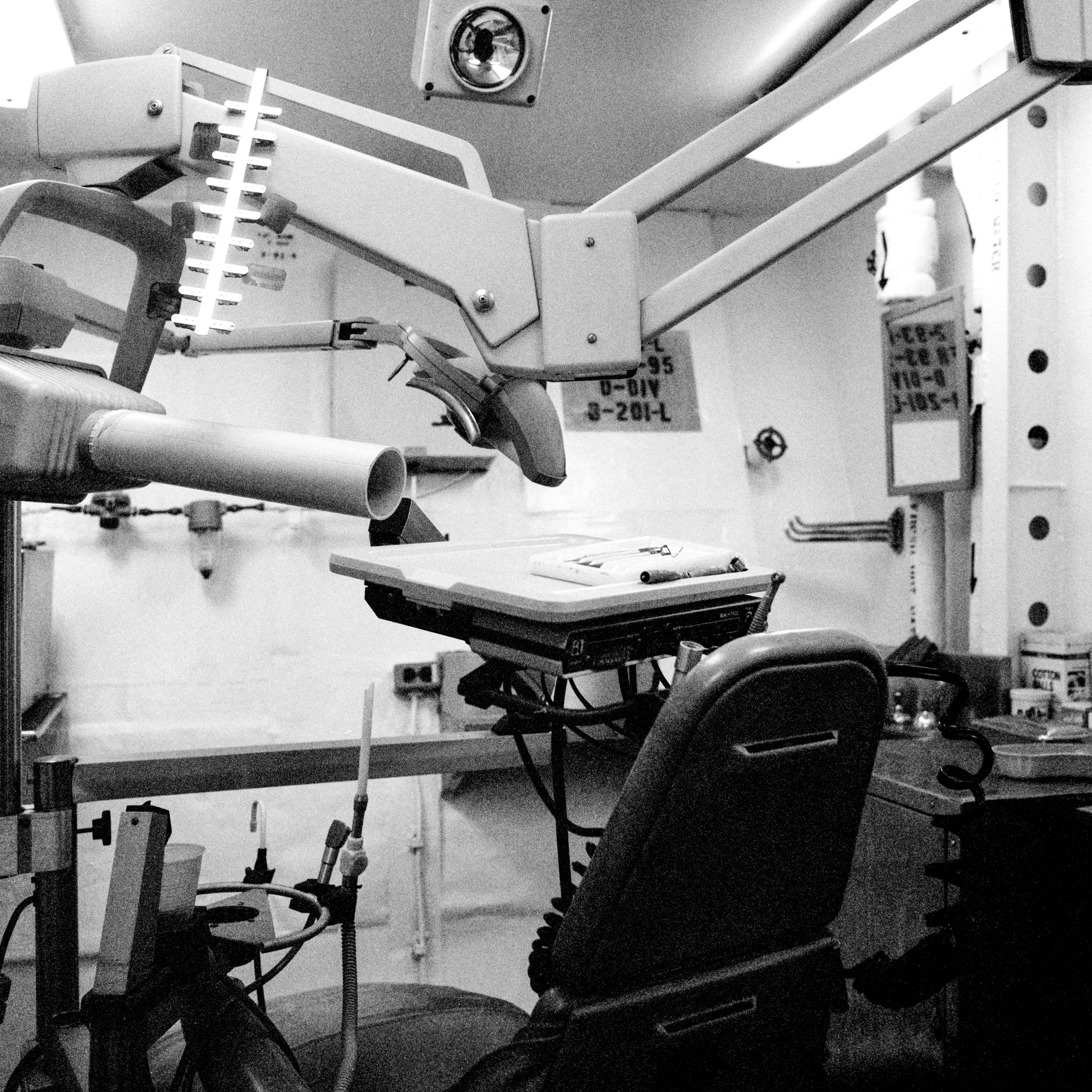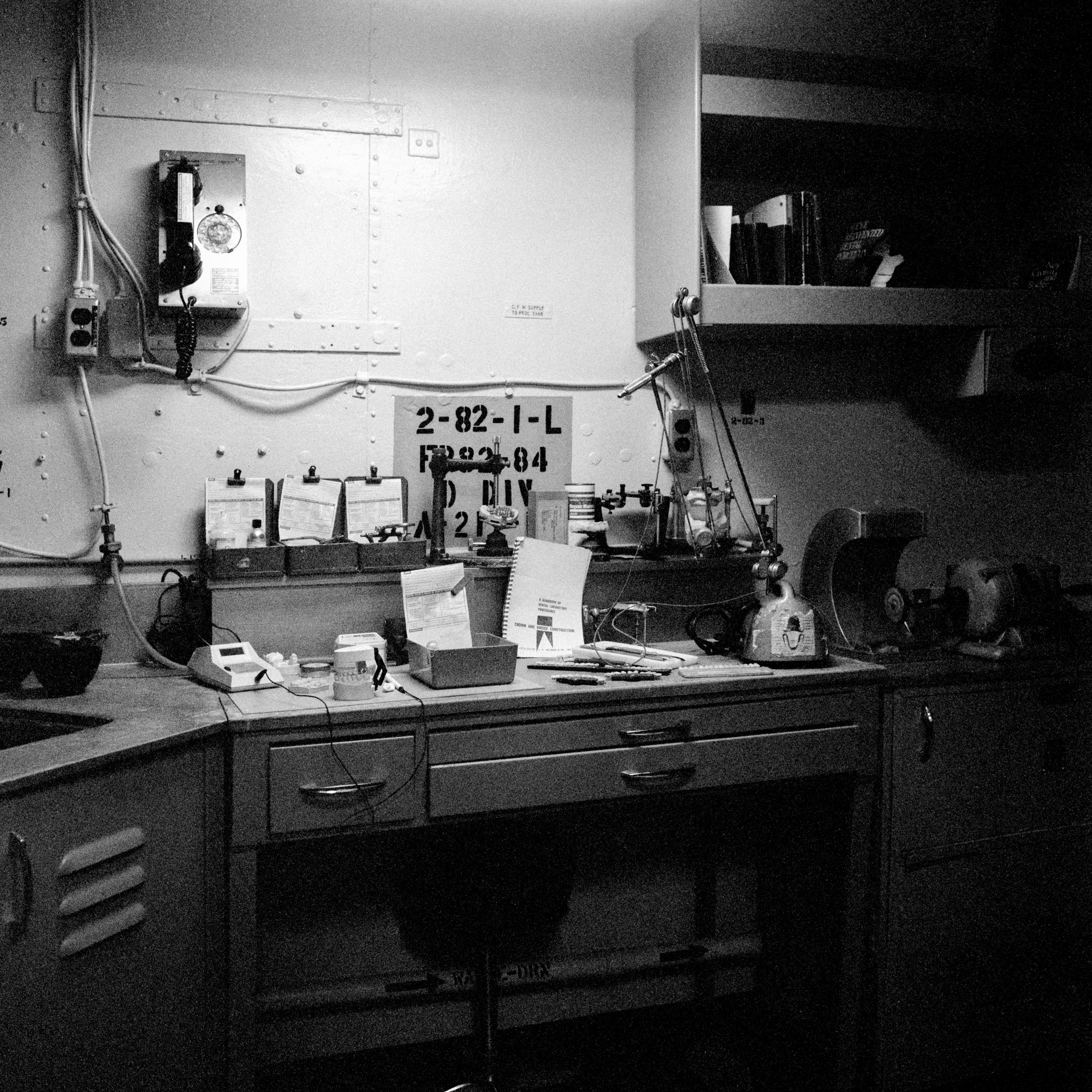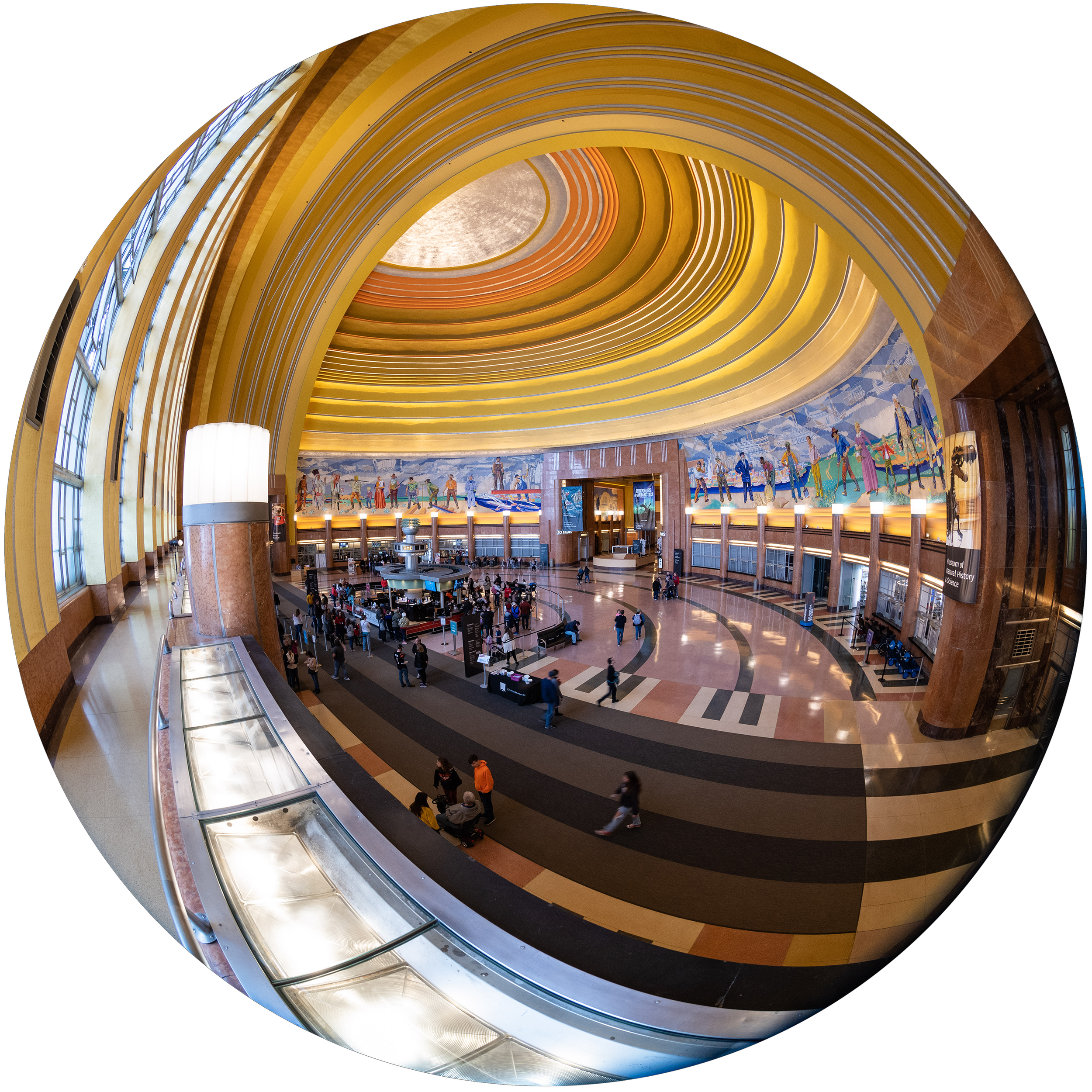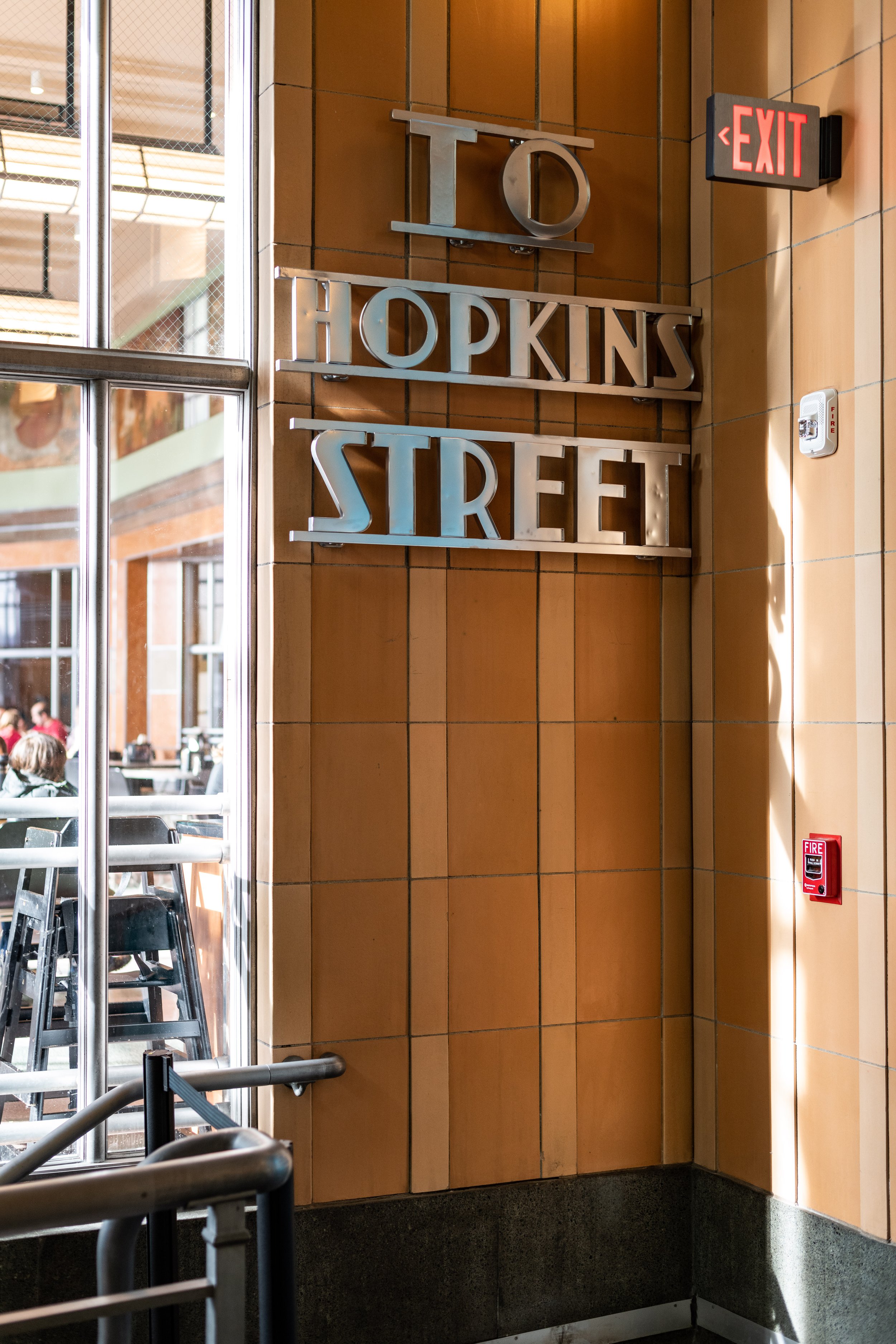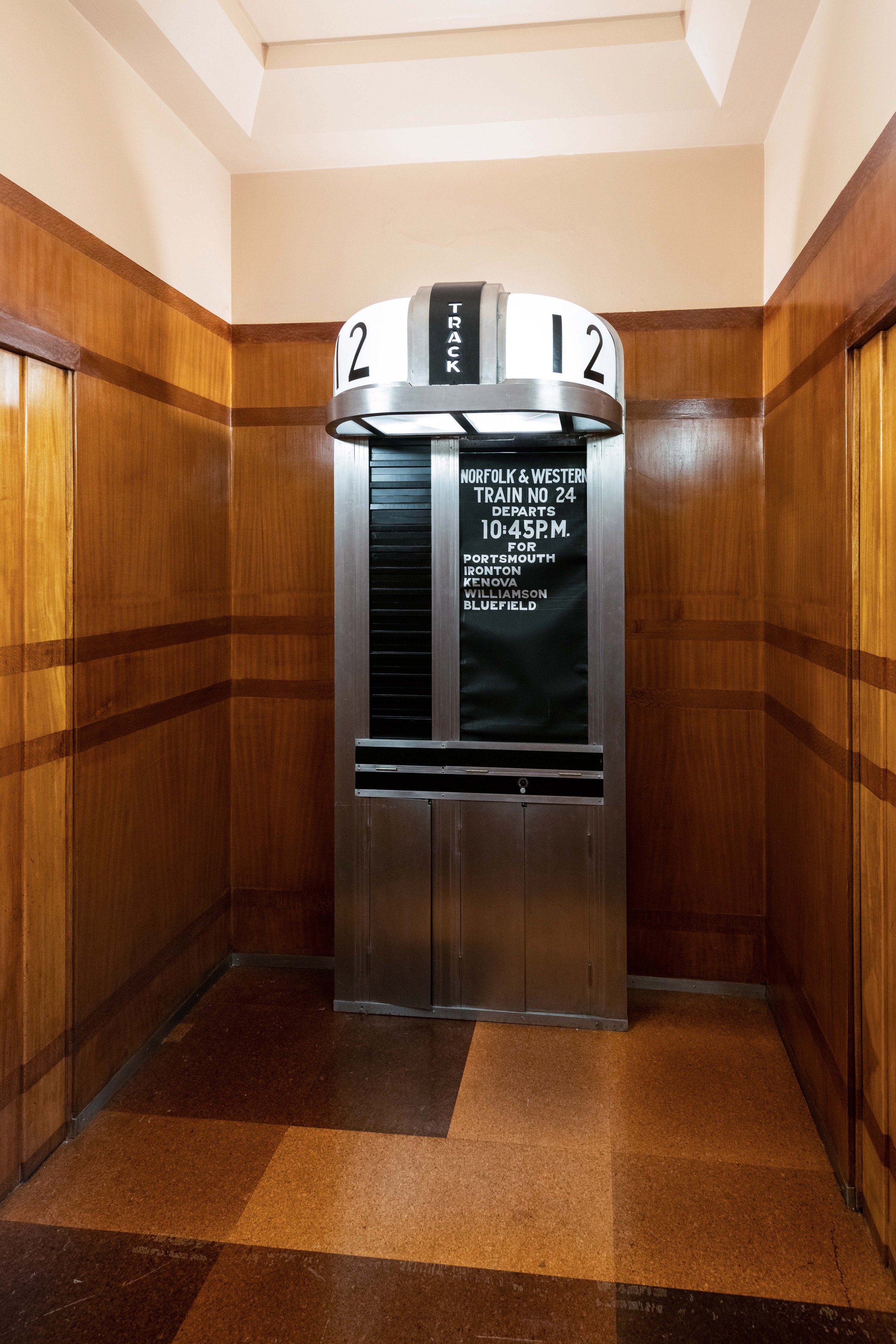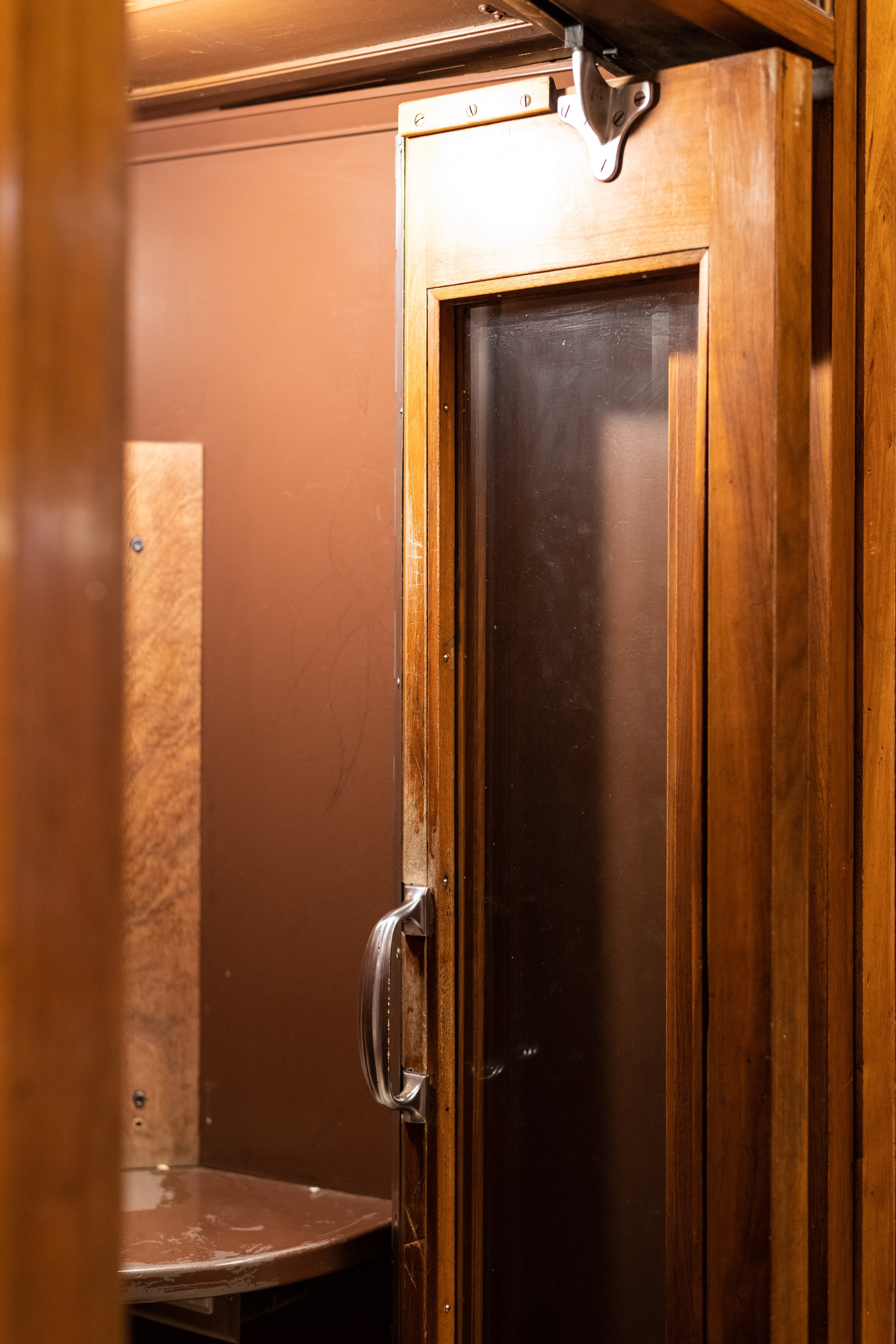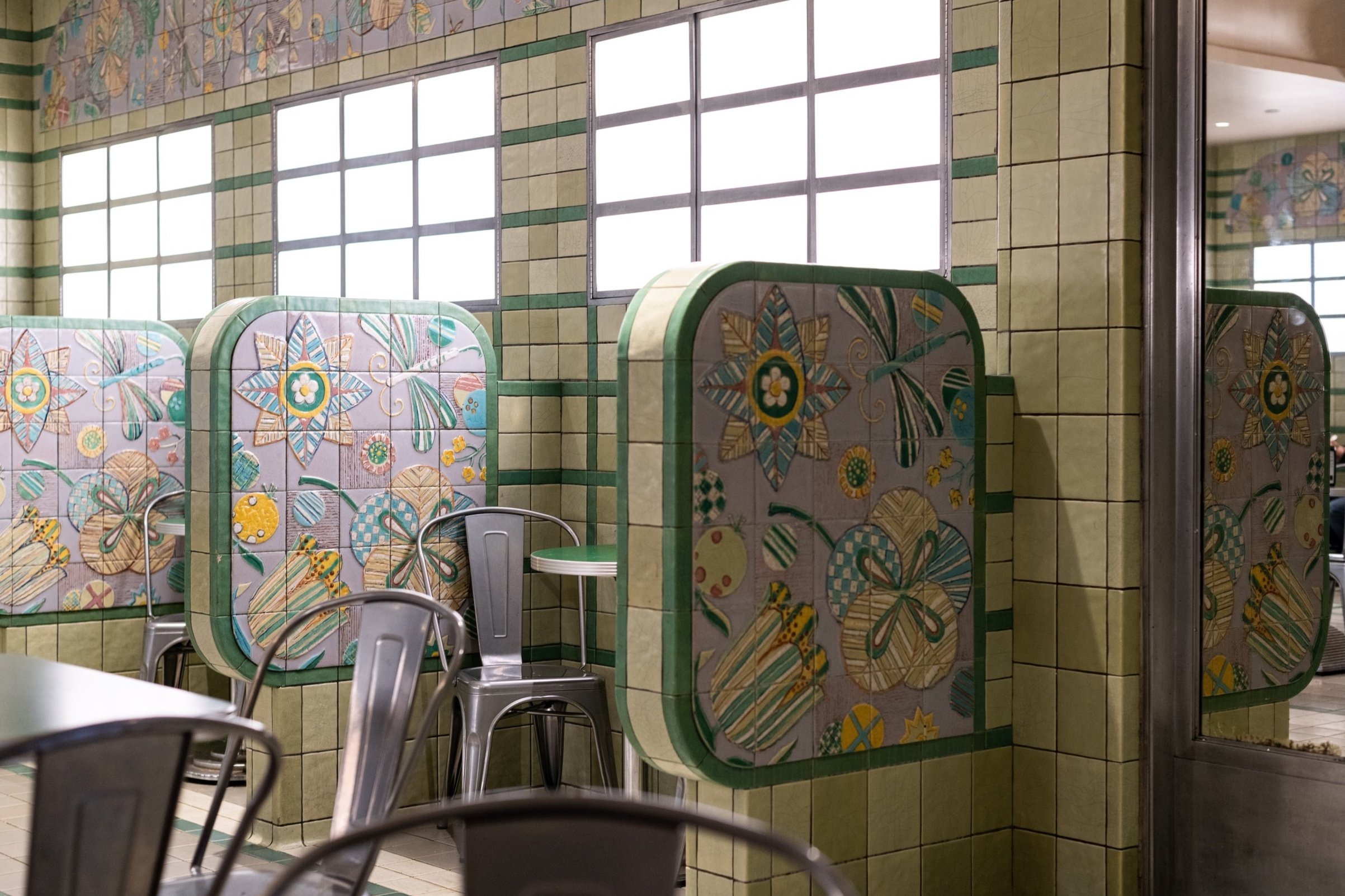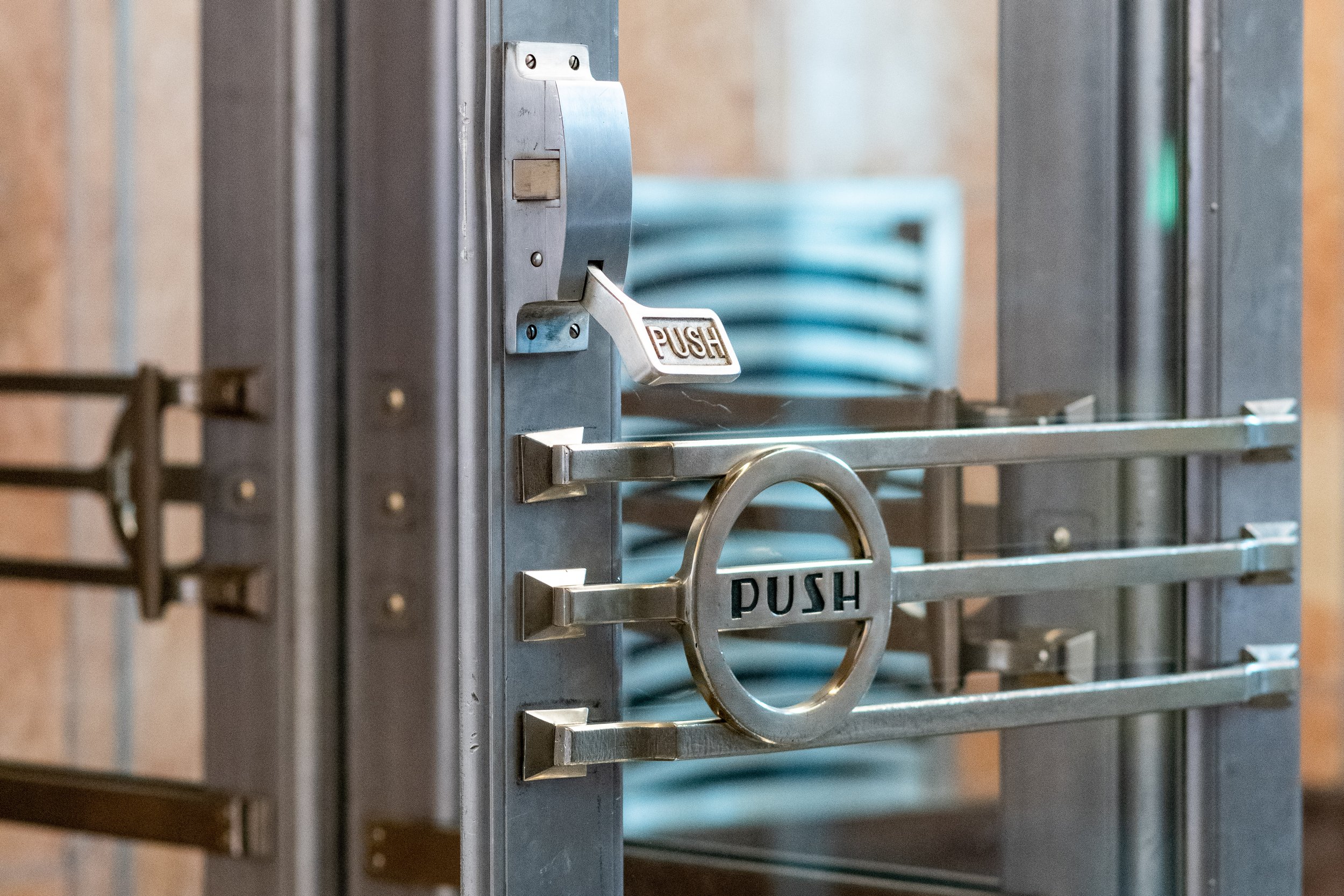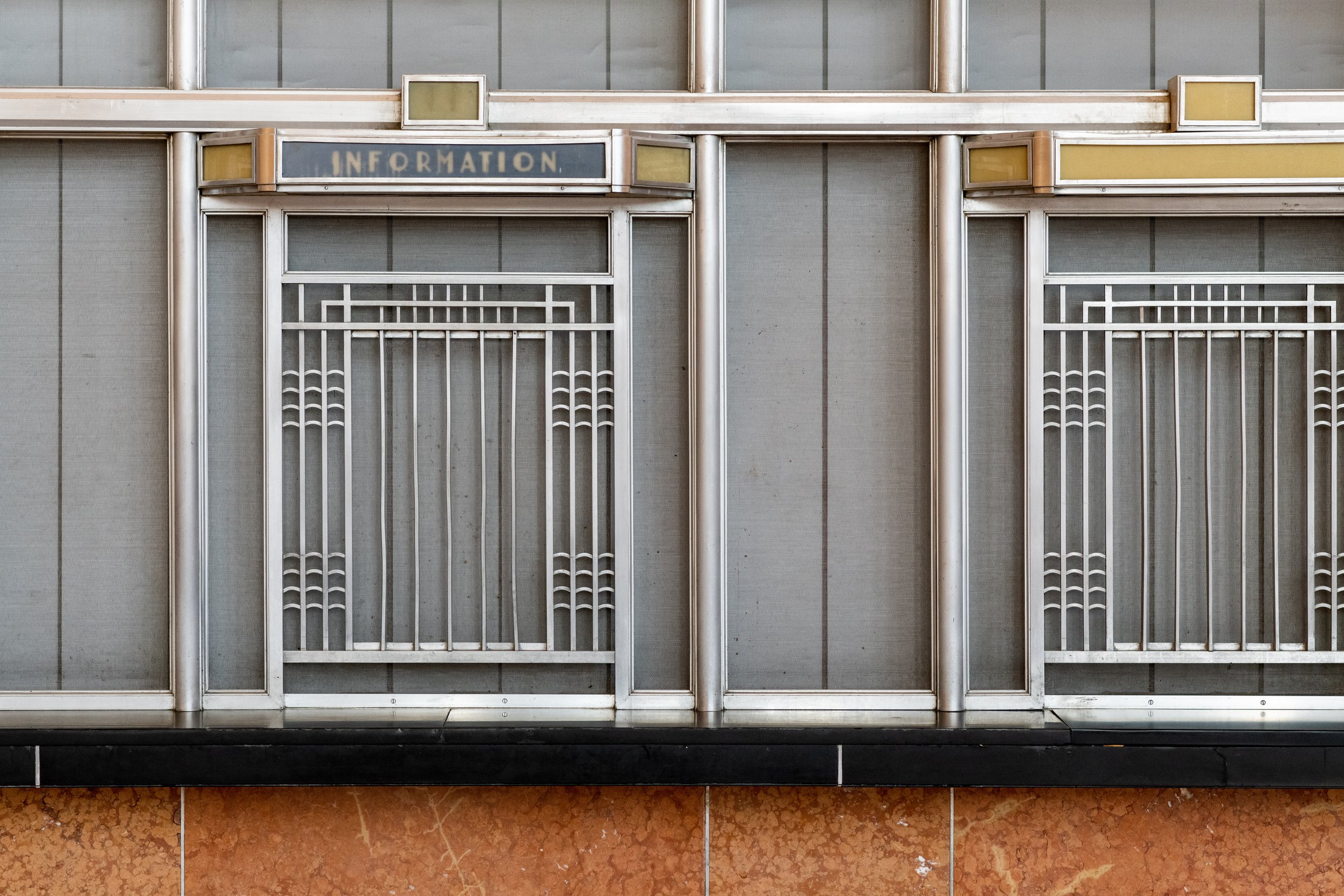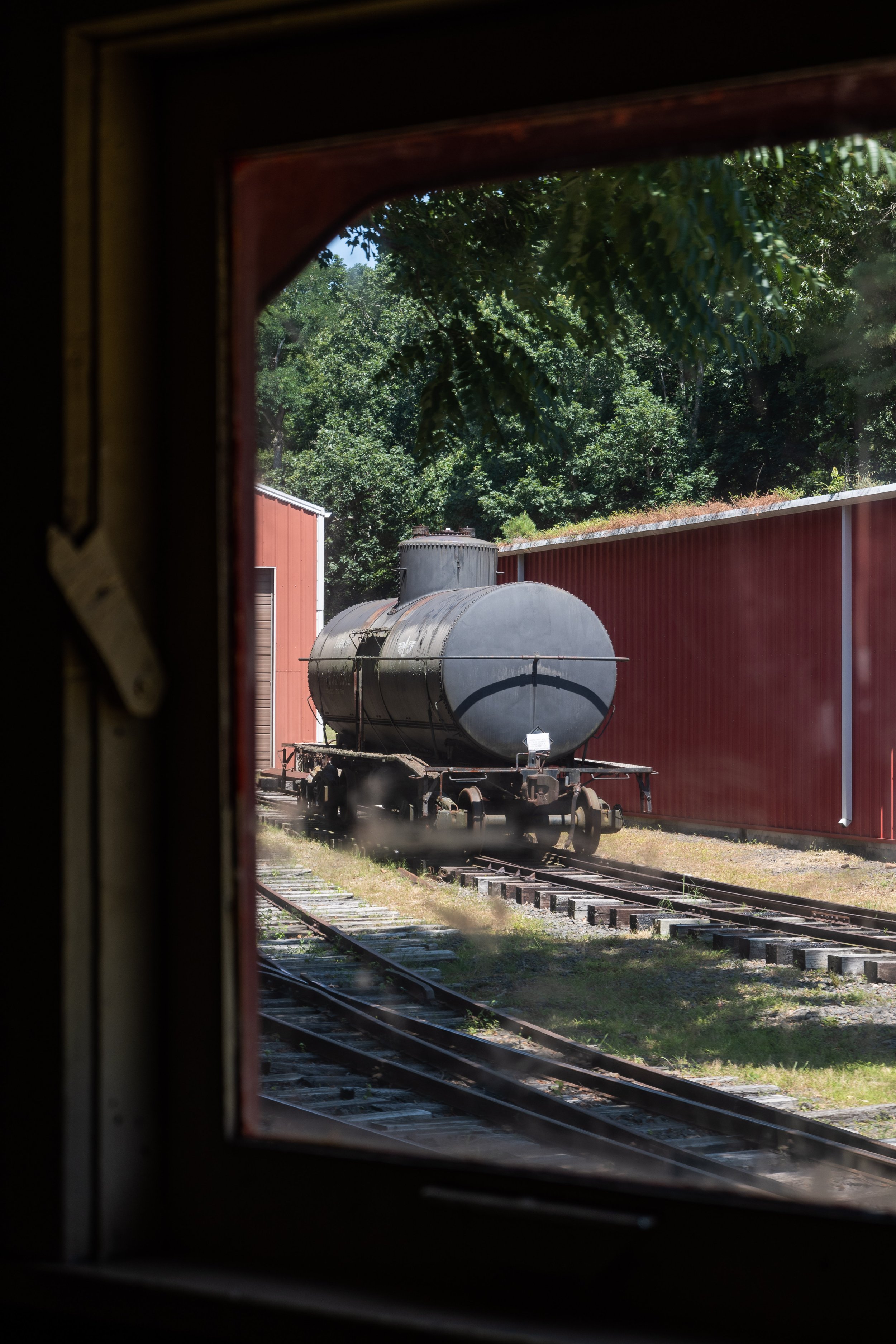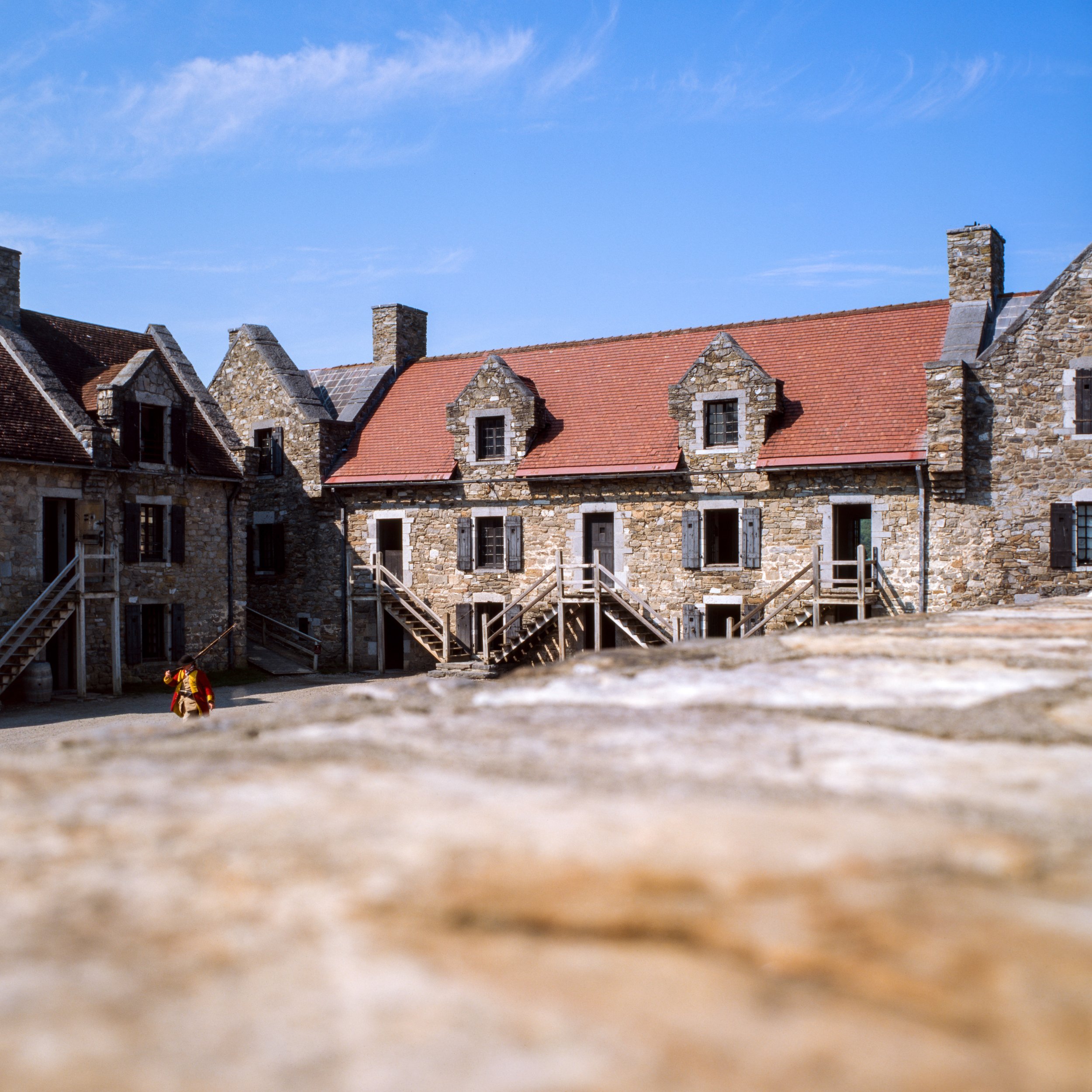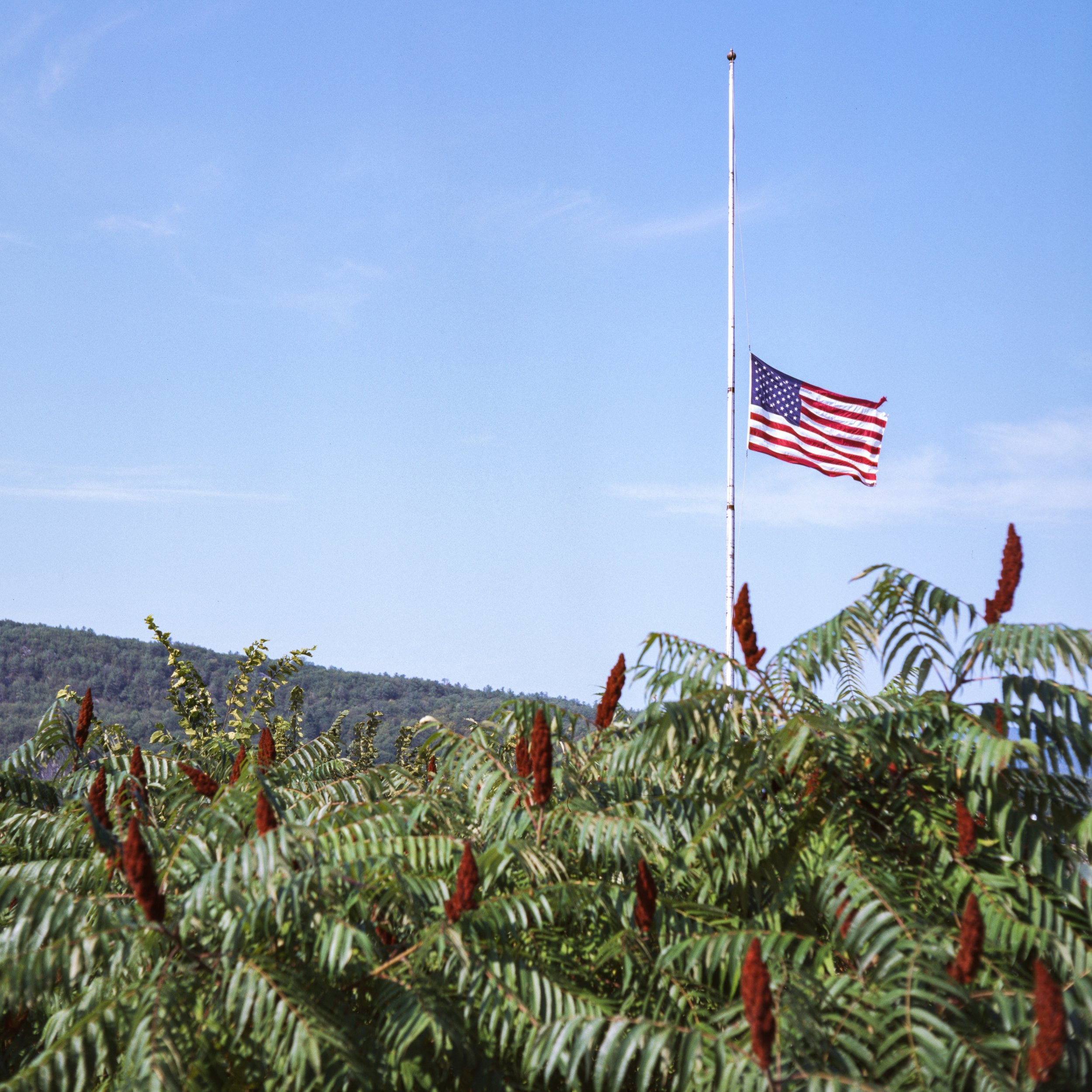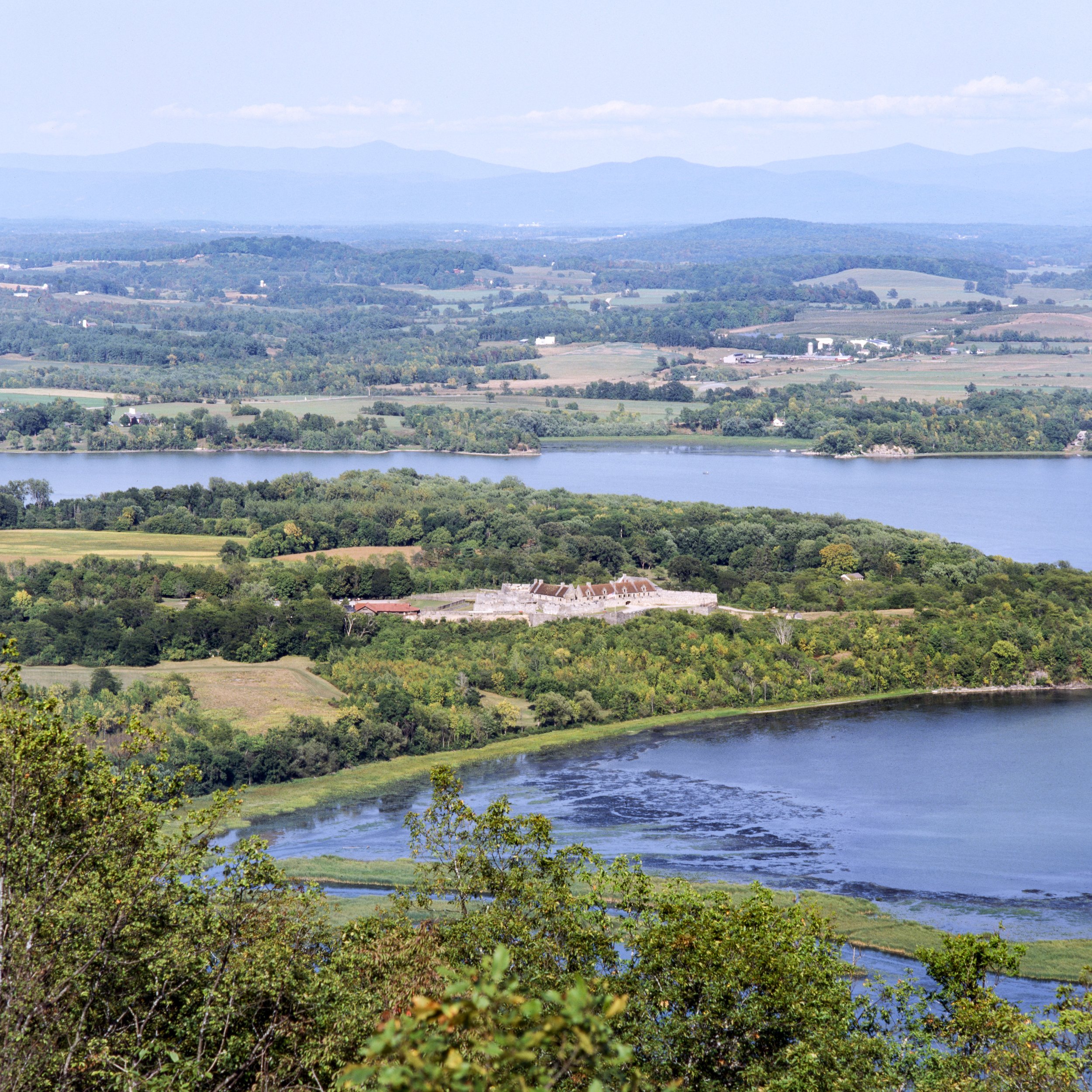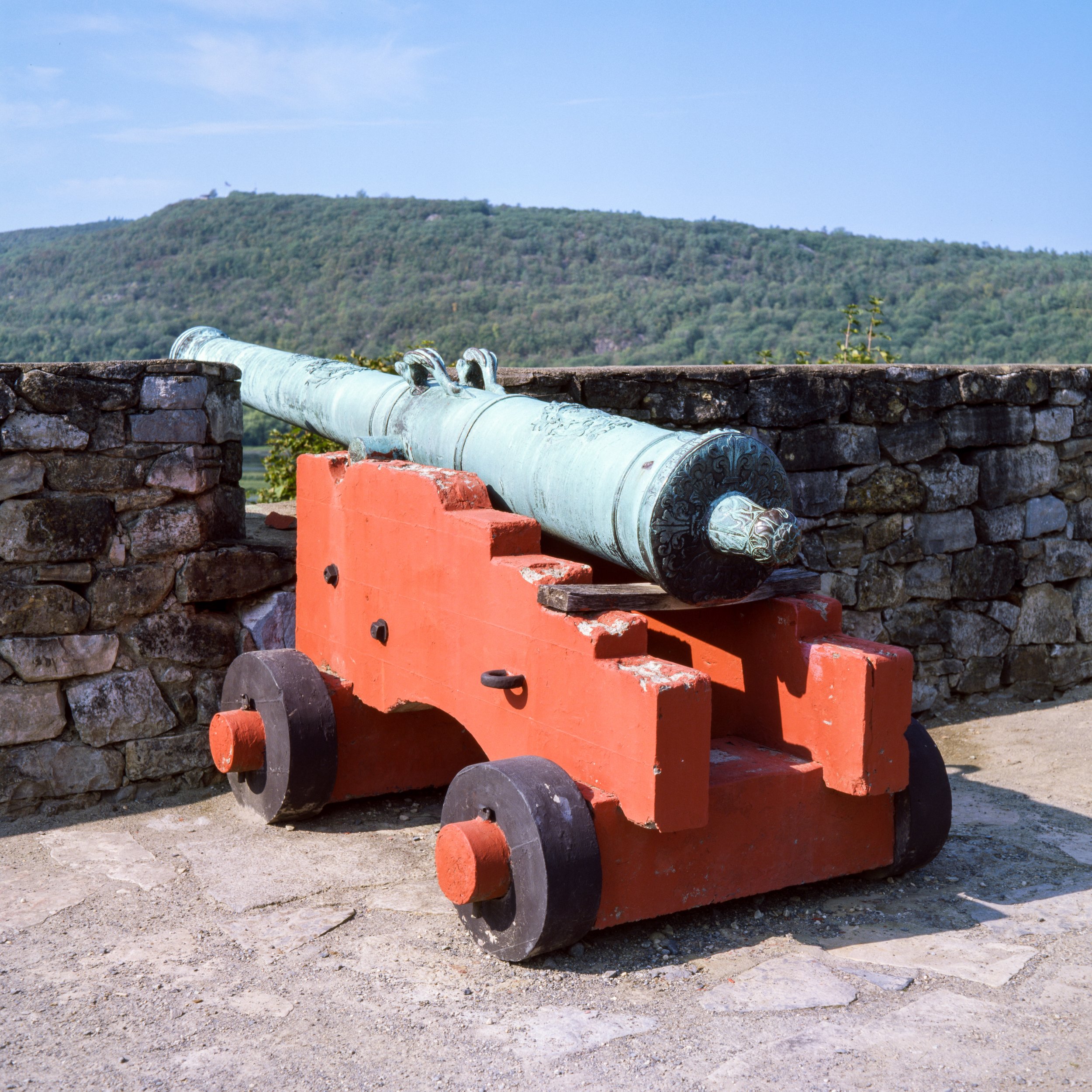Despite all the time I spend researching, reading, and digging up new leads, I’m always excited when a bit of interesting history just falls into my lap. With some time to kill in Camden, NJ before the Battleship New Jersey opened, I decided to walk around the city and take in the sights. As I wandered through downtown, I was surprised to find a building with “VICTOR TALKING MACHINE COMPANY” engraved above the main entrance. An abandoned warehouse sat diagonal to the what must’ve been the central office building, and another warehouse-like structure nearby (the defunct cabinet factory) had the trademark stained glass image of “His Master’s Voice” featuring Nipper, mascot of the company, prominently featured atop a central tower. I had my D850 and Nikon PC-E (tilt-shift) lenses with me for the battleship, so I took advantage of the nice skies and decided to shoot first then research later.
As it turns out, Camden was once the Mecca of phonograph production in the United States. Eldridge R. Johnson of Victor owned the patents to several key technologies needed to manufacture phonographs, which gave the company an edge over their competitors. The design of the lateral cut shellac record, patented by Emile Berliner of Victor, improved on Thomas Edison’s wax cylinders (invented 10 years earlier) by drastically simplifying the manufacture of playback media. The company started out making tabletop phonographs, but there were many competitors in this product category. Constantly embattled in expensive patent infringement lawsuits, Victor looked to a new product named the “Victrola” to bolster sales. Priced at $200 in 1906, the Victrola took the best Victor tabletop phonograph and flipped it on its head - literally. The unsightly horn, at this time a massive size to improve volume and sound quality, was flipped upside down in a wooden cabinet. The unsightly apparatus of the phonograph could now be hidden in a stylish cabinet that looked at home in the most elegant parlors of neighborhood socialites.
The Victrola catapulted the Victor Talking Machine Company to success. Carpentry shops were added to the Camden factory to churn out Victrola cabinets by the thousands. Floor standing models proved most popular for Victor, and several low cost options were introduced to the market in 1911. The factories in Camden produced 500,000 Victrolas annually by 1917, and an electric motor variant was introduced in 1913. The hand cranked models remained most popular through the 1920s as adoption of that remarkable technology known as electricity slowly entered American homes. Along with electricity came the next evolution of home audio, which would eventually destroy the Victor Talking Machine Company - radio. Radio broadcasts meant no more pesky records, better sound quality, and endless variety which were just some of the selling points that made radio more attractive to the average consumer.
Victor’s balance sheets drowned in surplus inventory, with thousands of machines crowding warehouses when a literal fire sale was held at Victrola dealers in 1925. Near-worthless Victrolas were burned as consumers traded them in for radios, and remaining inventory was sold at 50% of list price or shipped to South American distributors. The explosive growth of the Camden, NJ factories ground to halt, but by this time the factories sprawled over many city blocks. If you look closely at the postcard above, you’ll be able to pick out the buildings in this post as they were in the 1920s.
Despite the sale of improved acoustic phonographs and phonograph/radio combination units, the end was near in 1925. The company’s stock was worthless, and audio technology had moved past the Victrola’s acoustic amplification technology. More affordable electronically amplified phonographs allowed for volume control beyond the basic “doors open or closed” method offered by the acoustic phonograph, a massive improvement for the average consumer. Volume control was such a problem before electronic amplification that we were given the phrase “put a sock in it” - referring to the act of stuffing a sock down the phonograph’s horn to lower the volume.
The Victor Talking Machine Company, makers of the famous Victrola, operated from 1901 until 1929 when a buyout by the Radio Corporation of America (RCA) formed RCA Victor. Over the years, the company would produce phonographs, records, radios, and other electronics. Through subsequent acquisitions, Sony Music Entertainment became owners of Victor’s back catalog. Through a cooperative effort with the Library of Congress, you can stream over 16,000 recoding of Victor and Colombia records via the LOC online catalog. Give it a try - I listened to some fox trot recordings from 1924 through the National Jukebox while writing this blog post!





